Running an Ethernet cable through walls is the best way to achieve a clean and stable high-speed wired network connection. In-wall Ethernet installation delivers long-term reliability, regardless of whether you’re setting up a home office or extending internet to another room.
Proper planning and the right tools with safe routing can help you run an Ethernet cable through walls without damaging drywall or compromising signal quality. This step-by-step guide will walk you through the entire process. You will know about everything from planning the route to feeding the cable and installing wall plates.
Tools You’ll Need
Having the right tools makes running Ethernet cable through walls much easier and prevents accidental damage. This is why you need to gather all essential tools for a smooth installation before beginning. Here are the items that you will need:
- Fish tape or pull string
- Drill + drill bits
- Stud finder
- Wall plates
- Low-voltage mounting brackets
- Cable strippers
- RJ45 connectors
- Crimping tool
- Ethernet cable tester
- Screwdriver
- Optional: Flexible drill bit, conduit
How to Run Ethernet Cable Through Walls: Step-by-Step Process
Running the Ethernet cable through the walls requires you to follow a proper process. It will ensure that the fitting is proper and there are no issues down the road. Here is what you need to do.
Step 1 - Plan Your Cable Route
Planning determines the success of the entire installation. Identify the path from your router/network switch to the destination room. Here are the important things to consider during planning:
- Wall studs
- Electrical wiring
- Plumbing lines
- HVAC ducts
- Fire blocks inside walls
- Distance between rooms
- Whether it’s an interior or exterior wall
You can use a stud finder to map obstacles and mark your entry/exit points. It is best to avoid running Ethernet parallel to electrical lines to prevent interference.
Step 2 - Prepare Wall Openings
Once the route is planned:
- Mark the spot where the wall plate will be installed
- Cut a small opening using a drywall saw
- Install a low-voltage mounting bracket
This ensures a clean finish and gives the cable enough room to move.
Step 3 - Drill Entry and Exit Points
Use a drill to create holes inside the wall cavity. If running through multiple floors or hard-to-reach spaces, a flexible drill bit helps reach angles safely. Keep in mind that exterior walls usually contain insulation. Push slowly and avoid compressing insulation to protect signal quality.
Step 4 - Run the Ethernet Cable Through the Wall
Now the main step begins. Attach the cable to a fish tape or pull string and gently feed it through the wall cavity. Safety is an important aspect that you need to keep in mind here. Key safety points:
- Avoid sharp bends
- Do not pull the cable forcefully
- Maintain proper bend radius
- Keep it away from electrical wiring
- Do not staple tightly (use cable clips loosely)
Pull the cable through slowly to avoid damage. Once it appears at the exit point.
5. Install Wall Plates & Terminate the Cable
Attach RJ45 connectors using the crimping tool or terminate into keystone jacks. You need to then follow the steps mentioned below:
- Secure the wall plates
- Connect both ends to the devices/switch
- Test with an Ethernet cable tester
A successful test ensures proper connectivity and smooth data transfer.
Step 6 - Additional Expert Tips
To maintain long-term performance:
- Use high-quality in-wall rated cables - Prefer Cat6 or Cat6A for faster speeds and future-proofing.
- Respect the bend radius - Avoid tight bends to maintain signal performance.
- Leave a pull string for the future - Makes upgrades much easier without reopening walls.
- Keep Ethernet away from power lines - Prevents interference and improves reliability.
Final Thoughts
Running Ethernet cable through walls significantly boosts your network’s stability and aesthetics. The correct tools and smart planning with safe installation practices ensure you can create a professional in-wall wiring setup that lasts for years.
TS Cables provides high-quality in-wall rated Ethernet cables and accessories designed for clean and durable installations for high performance.
FAQs
1. How do I run Ethernet cable through a wall without cutting drywall?
Use existing openings such as baseboards, HVAC vents, or attic/basement access. Fish tape can guide the cable through small holes without needing large drywall cuts.
2. How hard is it to run Ethernet cable through walls?
It depends on the wall type and obstacles. Interior walls are easier. Insulated exterior walls or walls with fire blocks require extra care.
3. Who can run Ethernet cable through walls?
Electricians, low-voltage technicians, network installers, or any certified IT cabling professional can perform in-wall installations.
4. Can I run Ethernet cable through an exterior wall?
Yes. However, be mindful of insulation and moisture barriers. Use outdoor or in-wall rated cables for safety and longevity.
5. How much does it cost to run Ethernet cable through walls?
Professional installation may cost $150–$350 per run. It depends on wall complexity and cable length.
6. What type of Ethernet cable is best for in-wall installation?
Use in-wall (CMR/CM) rated Cat6 or Cat6A cables for the best performance. Avoid non-rated outdoor cables inside walls.
7. Do I need conduit for running Ethernet inside walls?
Not required, but conduit adds protection and makes future upgrades easier. It is especially important in commercial setups.
8. Can I staple Ethernet cable inside walls?
Avoid tight stapling. Use cable clips or J-hooks that do not crush the cable.






